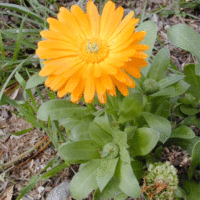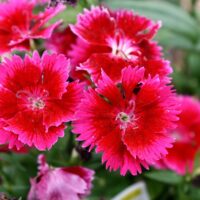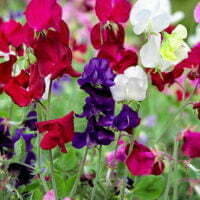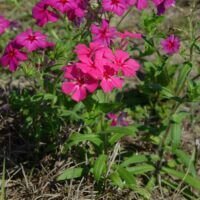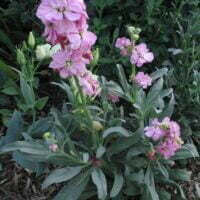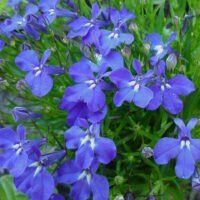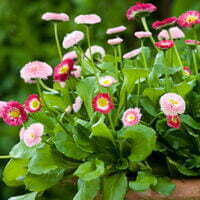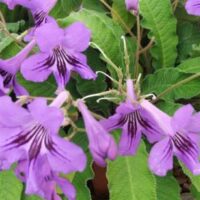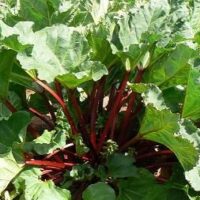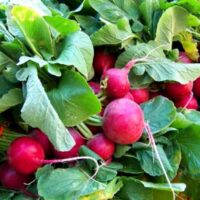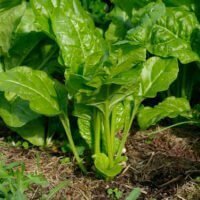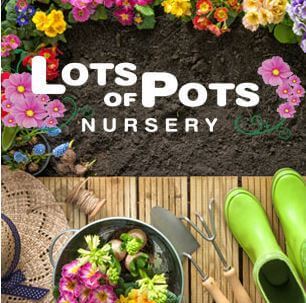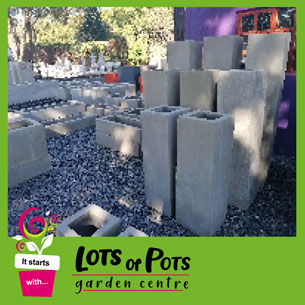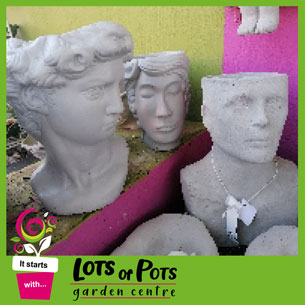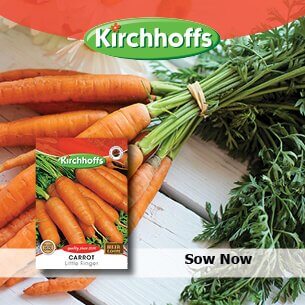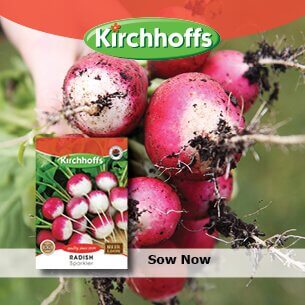What to do in your garden during July
Winter is steadily moving along. With spring just around the corner, July brings longer days and warmer temperatures. Countrywide the month of July is the gardener’s time to prune, plant and prepare for spring.
Follow these tips and pointers to help your garden look its best this July.
Plant and Sow
Annuals
The following annuals or seedlings can be planted out from trays in July:
-
 Calendula officinalis (Pot marigold)
Calendula officinalis (Pot marigold) -
 Tagetes erecta (Marigold, african marigold)
Tagetes erecta (Marigold, african marigold) -
 Dianthus (Carnation, Pink)
Dianthus (Carnation, Pink) -
 Papaver orientale (Oriental poppy)
Papaver orientale (Oriental poppy) -
 Penstemon species (Penstemon species)
Penstemon species (Penstemon species) -
 Lathyrus odoratus (Sweet pea,)
Lathyrus odoratus (Sweet pea,) -
 Phlox drummondii (Annual phlox)
Phlox drummondii (Annual phlox) -
 Matthiola incana (Stocks)
Matthiola incana (Stocks) -
 Lobelia erinus (Edging lobelia)
Lobelia erinus (Edging lobelia) -
 Celosia argentea (Celosia, cock’s comb)
Celosia argentea (Celosia, cock’s comb) -
 Bellis perennis (English daisy, lawn daisy)
Bellis perennis (English daisy, lawn daisy)
Sow Streptocarpus, Primula obconica and Begonia seeds in a greenhouse now, for summer flowering.
Vegetables
Permanent crops to plant now in the vegetable garden are:
Sow the following in seed trays and place them in the greenhouse:
Shrubs and Perennials
- Various Aloes and flowering succulents are widely available this time of year. Why not add a few to your winter garden? They boast warm vibrant colours and attract all sorts of wildlife to the garden. Try Aloe Hedgehog, Aloe ferox and Aloe speciosa.
- Peonies can be planted and transplanted now. Remember they prefer a slightly more alkaline soil ph.
- Now is a great time to plant Camellias. They love well-drained soil with slightly acidic soil. Add some pine needles and a good handful of bone meal to the planting hole. Camellias do extremely well in containers so keep this in mind when planting up the patio.
- Rhododendrons, also known as Azaleas can also be planted now, but don’t plant them too deep. They produce surface roots which don’t like being buried too deep. Azaleas also make great container specimens.
- Consider planting conifers in the garden.
- Osteospermum daisies, Pelargoniums, Wallflowers and Diascias as well as Poinsettias and Calliandra are in full flower during July and can all be planted now.
- Aquilegias can also be planted this month for a spectacular show in springtime.
- Roses can also be added to the garden now. Start by preparing the planting holes. Dig the holes nice and deep and add in some bone meal and compost, roses are famously picky when it comes to their roots so make sure the planting holes allow for adequate drainage.
- July is also the time to plant bare-rooted roses and fruit trees. Provide superphosphate and organic bone meal at planting.
View one of our regional maintenance guides for more accurate suggestions.
Garden Maintenance
General Garden Maintenance
- Now is a good time to spend some attention on the maintenance of the hard landscaping in your garden. Benches, walkways edging, paving etc must be repaired, sanded and varnished, cleaned, adjusted, relocated where necessary and so forth.
- There might be time now to put up a pergola, lay down paving or make a new water feature.
- Readily remove faded flowers from your winter flowering seedlings.
- Iceland poppies, violas and pansies perform particularly well when deadheaded regularly.
- Water and deadhead sweet peas regularly and tie the plants to a trellis or support where necessary.
- In drier areas of the country, water the lawn once a month.
- Continue to remove weeds from lawns and pavings.
- Protect tender plants from frost where necessary and move containerised plants to a sheltered location.
- If your plants are damaged by frost resist the temptation of cutting them back, this will simply encourage new growth which is even more vulnerable to frost. Rather wait until the frost has passed and then neaten them up.
- Be careful not to overwater your plants during winter. Colder temperatures mean your plants need less water, many of them go dormant during this time of year and lower temperatures also result in lower evaporation rates. A moderate watering every 7-10 days should be sufficient.
- Water the garden during the late morning when the ground has warmed up. This will make sure the leaves of your plants are dry by nightfall and will minimise cold damage.
- You can also mulch your plants to protect the roots from frost damage en encourage more beneficial soil temperatures.
- Water irises and remember to water liliums once a month.
- Continue treatment of conifers with Aphicide or Insect Granules.
- Dead, diseased and damaged wood from deciduous trees and shrubs can be removed. Evergreen and tender plants can be left until Spring.
- Dig manure and compost into the ground where you plan to plant in spring.
- Slightly increase the watering of cacti and succulents as their growing season will start soon.
Bulbs
- Plan for summer and autumn flowering bulbs that can be planted next month.
- Mulch beds over the top of spring-flowering bulbs.
- Summer and Spring flowering bulbs can be fed with bulb food and should be kept moist, but not overwatered.
Pruning
- Hydrangeas should be pruned now to promote a show in the season to come. Remove dead and diseased materials, remove the flowering stems to about 30cm above the soil, but make sure to keep 2 healthy buds beneath each cut. In areas with severe leave this chore for next month. Only cut back those shoots which have flowered.
- Lagerstroemia or pride of India can be cut back by a third, once again remove old tacky growth and excessively woody stems.
- Cut back, neaten and clean out hedges. Remember to add offcuts to the compost heap.
- Remove faded flowers from winter annuals.
- Prune roses and fruit trees, spray twice with winter-strength lime sulphur.
- Shrubs like box honeysuckle, butterfly bush (Buddleja davidii), Cape fuchsia, Chinese lanterns, cigarette bush (Cuphea ignea), deutzia, elderberries, firedart bush, hibiscus, hypericum, lavender, lemon-scented verbena, may bush, Mexican orange (Choisya ternata), myrtle, pentas, plectranthus, privet (Ligiustrum), river bells (Mackaya bella), tibouchina and viburnum can all bu pruned during this month.
- Prune and shape vines.
- Remove dead, diseased and damaged wood from deciduous trees and shrubs. Leave evergreens and tender plants until spring.
Pest and Disease
- Generally, there are fewer pests in the garden this time of year, Aphids, however, tend not to be put off by the cold, spray them with a strong jet of water or treat severe infestations with a suitable pesticide.
- Powdery mildew may become a problem as damper conditions creep in.
- Only spray where necessary to keep the garden free of pests. – There are a number of organic products and remedies available.
- Treat fruit trees for pests with a spray. Remember to spray your roses and affected ornamentals as well as many of them harbour pests which attack fruit trees. Particularly spray Pyracantha and quince.
Weeds
- It is essential to combat weeds during winter before they multiply in the favourable conditions soon to come.
- Remove weeds from the lawn by applying a broad-leaf weed-killer, weeds in the garden bed are best removed by hand before they flower and set seed.
- Minimise weeds by applying mulch and weed guard or landscape fabric and refrain from turning or “cultivating” the soil.
Feed and Fertilise
- Feed winter-flowering annuals every 14 days with a water-soluble fertilizer like Nitrosol or Multifeed.
- Freshen up vegetable beds with fresh compost and organic fertilizer, after harvesting your vegetables and herbs.
- Liquid fertiliser can be applied every 14 days or so to encourage a heavy yield.
- Leafy vegetables like spinach and lettuce can be fed with 2:3:2 or a liquid plant food like Multifeed Classic.
- Lemon trees can be fed 2 kg (for a mature tree) of 3:1:5 and mulch with compost around the tree.
- Summer and Spring flowering bulbs can be fed with bulb food and should be kept moist, but not overwatered.
- A dose of 3:1:5 would do your summer-flowering bedding plants well.
Lift and Divide
- Overgrown Zantedeschias or arum lilies can be lifted and divided now.
- Daylilies or Hemerocallis can be lifted, divided and transplanted now. Prepare the planting holes well with organic matter or compost and some bone meal.
- Some advice when dividing perennials:
- Water clumps well before lifting.
- Some perennials prefer not to be divided into two small sections as this often leads to a longer recovery period.
- Don’t lift all the plants to be divided at once, lift them as you divide them to minimise exposure of the roots.
- Remove and replant the young growth and plantlets from the outer edges and discard older growth in the centre of clumps.
Indoor Plants
- Indoor plants require very little water this time of year as many of them are dormant. When you do water make sure the water is room temperature.
- With a wet cloth or sponge, gently wipe and dust the leaves every two weeks or so.
- It’s best to keep your indoor plants away from draughts moving through the room.
- Primulas, cyclamen and cineraria make great indoor plants, these can be fed once a week and require slightly more water than other now dormant indoor plants.
- Single and double-flowered begonias, as well as flowering Kalanchoes, should also be available now.
- Avoid getting water on the foliage of African Violets.
Mulching
If you didn’t make use of mulch during the hotter months, you have no excuse now as mulching will prevent the soil from losing moisture on hot days in the warmer regions.
Much will also help with protection on cold frosty nights in the colder regions and serve a dual purpose for our more temperate regions!
In case you needed yet another reason to get stuck in, mulch is also great for suppressing weed growth.
For more accurate garden maintenance tips in your climate visit this link and select the most suitable region.






